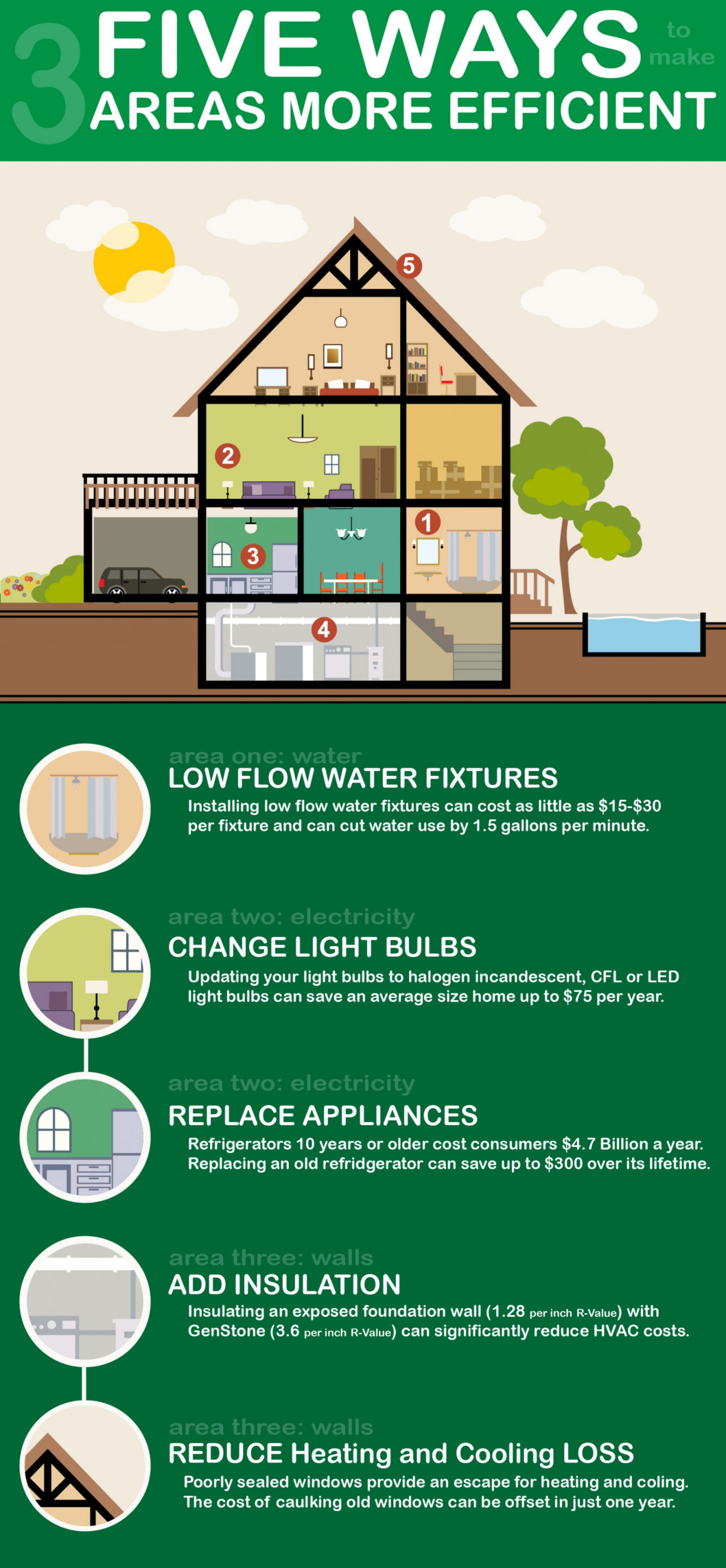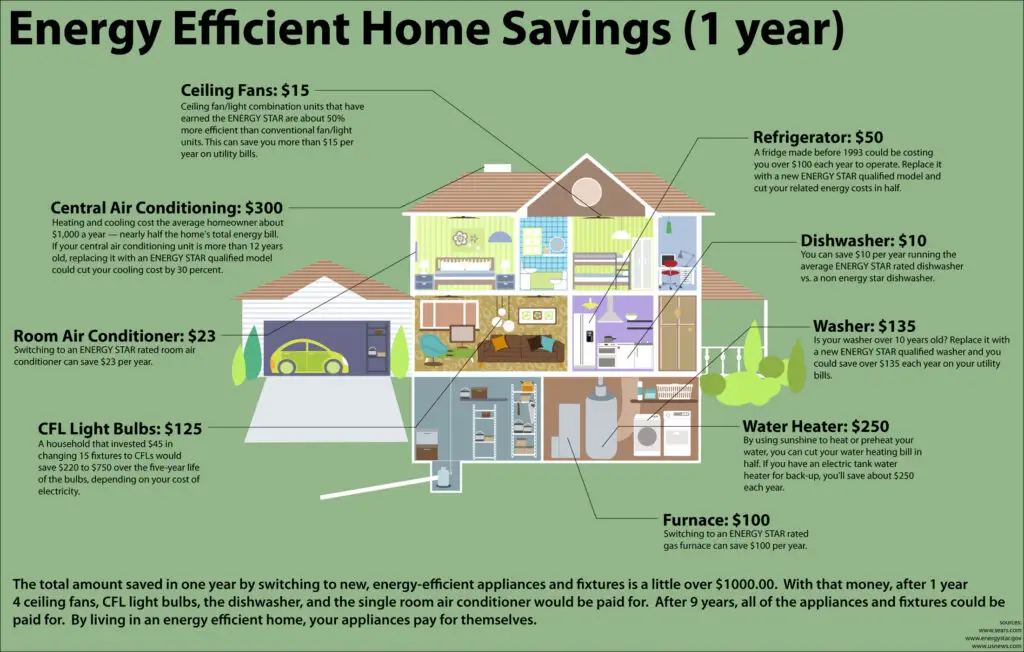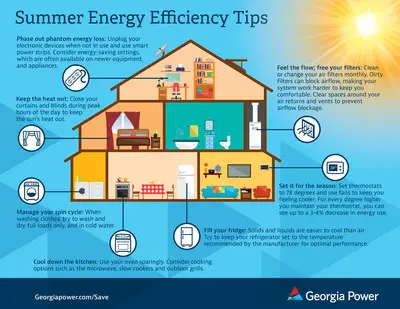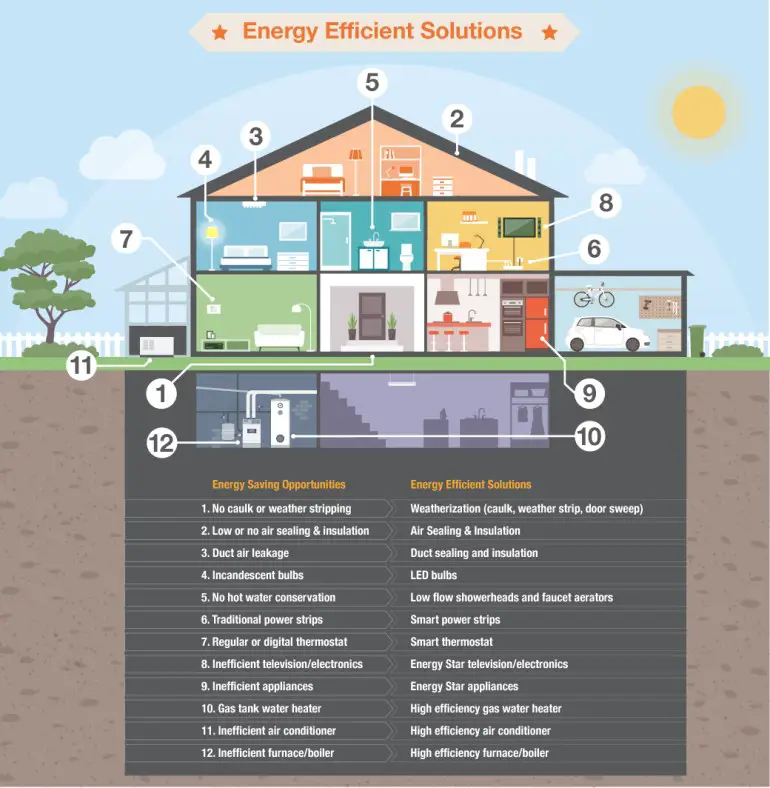Do you want to save money while also reducing your carbon footprint? Well, I’ve got some great news for you! Today, I want to talk about energy-efficient home improvements. Trust me, making these upgrades will not only help you cut down on your utility bills, but they’ll also make you feel good about your contribution towards protecting the environment. So sit back and relax, because I’m going to share with you some fantastic ways to make your home more energy-efficient.
Now, let’s dive right in, shall we? One of the first things you can do is to upgrade your insulation. By investing in proper insulation for your walls, attic, and pipes, you’ll be able to keep the warm air inside during the winter and the cool air inside during the summer. This means you won’t have to rely as much on your heating and cooling systems, resulting in substantial energy savings. And don’t worry, I’ll be discussing more details about insulation and other energy-efficient home improvements in the rest of this article. We’ll cover everything from replacing old appliances with energy-efficient ones to installing smart thermostats that can help you save even more money. So stay tuned for more tips and tricks to improve your home’s energy efficiency and lead a more frugal lifestyle!
10 Energy-Efficient Home Improvements to Save Money
As someone who is constantly seeking ways to save money and live a frugal lifestyle, I have discovered that investing in energy-efficient home improvements is not only beneficial for my wallet, but also for the environment. These improvements not only reduce energy bills, but also contribute to a reduced carbon footprint and increased home value. In this article, I will share with you ten energy-efficient home improvements that have helped me save money and live more sustainably.
1. Insulate Your Home
Benefits of Insulation
One of the most effective ways to improve energy efficiency in your home is through insulation. Insulation helps to keep your home warm in the winter and cool in the summer by preventing the transfer of heat between the interior and exterior of your home. This results in lower energy bills as your heating and cooling systems don’t have to work as hard to maintain a comfortable temperature.
Different Types of Insulation
There are several types of insulation available, including fiberglass, cellulose, and spray foam. Each type has its own benefits and considerations, so it’s essential to research and choose the insulation that best suits your needs. Fiberglass insulation is a commonly used and cost-effective option, while cellulose insulation is more environmentally friendly. Spray foam insulation provides excellent coverage and can help seal air leaks.
Professional Installation vs. DIY
While some homeowners may opt to install insulation themselves, it’s often best to hire a professional for proper installation. Professionals have the knowledge and expertise to ensure that insulation is correctly installed, minimizing the risk of air leaks and maximizing energy savings. Additionally, professionals can help identify areas in your home that may need extra insulation or attention.
2. Upgrade to Energy-Efficient Windows
Advantages of Energy-Efficient Windows
Replacing old, inefficient windows with energy-efficient ones can have a significant impact on your energy bills. Energy-efficient windows help to prevent heat transfer, reduce drafts, and provide better insulation. This means that your heating and cooling systems won’t have to work as hard to maintain a comfortable temperature, resulting in energy savings.
Choosing the Right Window Type
When selecting energy-efficient windows, it’s crucial to consider factors such as the window frame material, glazing options, and the U-factor. Window frame materials include vinyl, wood, and fiberglass, each with its own advantages and considerations. Opting for double or triple-pane windows with low-emissivity coatings can further improve energy efficiency. The U-factor measures a window’s insulation value, with lower U-factor values indicating better insulation.
Proper Installation Techniques
Proper window installation is essential to ensure optimal energy efficiency. If windows are not installed correctly, air leaks can occur, reducing the energy-saving benefits. Hiring a professional window installer is recommended to ensure a proper fit and minimize the risk of air leaks. Additionally, professionals can help you choose the right windows for your home and provide expert advice on maintenance and care.

3. Install a Programmable Thermostat
Energy Savings with Programmable Thermostats
A programmable thermostat allows you to set different temperature settings for various times of the day, helping to regulate your home’s heating and cooling more efficiently. By programming your thermostat to lower the temperature when you’re away or asleep and raise it when you’re home, you can significantly reduce energy consumption and save money on your utility bills.
Tips for Optimal Programming
To maximize energy savings with a programmable thermostat, consider setting lower temperatures during times when you’re typically away from home, such as when you’re at work or sleeping. Aim for a comfortable temperature when you’re at home, but avoid excessive heating or cooling. Experiment with different temperature settings to find what works best for you and your family’s comfort levels.
Smart Thermostats vs. Traditional Thermostats
While traditional programmable thermostats are effective in reducing energy consumption, smart thermostats offer additional features and benefits. Smart thermostats can learn your daily routine and adjust the temperature accordingly, saving you time and effort in programming. They also provide remote access through smartphone apps, allowing you to control your home’s temperature from anywhere, further maximizing energy savings.
4. Convert to LED Lighting
Benefits of LED Lights
LED (Light Emitting Diode) lighting has become increasingly popular due to its energy efficiency and long lifespan. LED lights use significantly less energy than traditional incandescent or compact fluorescent bulbs, helping to reduce energy consumption and lower electric bills. Additionally, LED lights produce less heat, making them safer and more comfortable to use.
Different Types of LED Bulbs
LED bulbs come in various shapes, sizes, and colors, making them suitable for virtually any lighting need. From standard A19 bulbs to decorative and specialty options, LED bulbs offer versatility and energy efficiency. When purchasing LED bulbs, pay attention to the wattage equivalents and color temperature to ensure the desired brightness and ambiance.
Proper Lighting Placement
To maximize energy savings and enhance the overall lighting experience in your home, consider the placement of LED lights. Strategically position lights to provide adequate illumination while avoiding unnecessary waste. Use task lighting for specific areas and rely on natural light as much as possible during the day. Dimmer switches and motion sensors can also help regulate lighting levels and reduce energy consumption.

5. Use Energy-Efficient Appliances
Energy Star Ratings
When it comes to appliances, choosing energy-efficient models can lead to significant savings on your electricity bills. Look for appliances that bear the Energy Star label, as they meet or exceed strict energy efficiency guidelines set by the Environmental Protection Agency (EPA). Energy Star appliances are designed to consume less energy while providing the same level of performance as their non-energy-efficient counterparts.
Selecting the Right Appliances
When purchasing new appliances, consider their energy efficiency ratings, features, and estimated annual energy consumption. Compare energy usage between models to determine the most energy-efficient option. Additionally, look for appliances with advanced features such as energy-saving modes and timers that can help further reduce energy consumption.
Maintenance and Care
Proper maintenance and care of your appliances are crucial to ensure optimal energy efficiency and prolong their lifespan. Regularly clean and maintain appliances to prevent dust buildup, which can hinder performance and increase energy usage. Follow manufacturer guidelines for maintenance and consider scheduling professional inspections or tune-ups to keep your appliances running efficiently.
6. Opt for Solar Power
Advantages of Solar Energy
Harnessing solar power helps reduce reliance on traditional electricity sources, leading to both environmental and financial benefits. Solar panels convert sunlight into electricity, allowing you to generate your own energy. By using solar power, you can decrease your reliance on the grid, potentially lower your electricity bills, and reduce your carbon footprint.
Different Solar Power Systems
There are several solar power system options available, including grid-tied, off-grid, and hybrid systems. Grid-tied systems allow you to remain connected to the utility grid while also generating electricity through solar panels. Off-grid systems are not connected to the grid and require energy storage solutions, such as batteries. Hybrid systems combine both solar power and grid electricity, ensuring a continuous power supply.
Cost and Financing Options
The cost of installing solar panels can vary depending on factors such as the size of the system and installation complexity. However, there are various financing options available, including loans, leases, and power purchase agreements (PPAs), which can help make solar energy more accessible and affordable. Additionally, some governments and utility companies offer incentives and rebates for solar installations, further reducing the upfront costs.

7. Harness Natural Light
Designing for Natural Light
Maximizing the use of natural light in your home can help reduce the need for artificial lighting and decrease energy consumption. When designing or renovating your home, consider incorporating large windows or glass doors to allow ample natural light to enter. Position rooms and living spaces in a way that maximizes exposure to the sun’s rays throughout the day.
Installing Skylights and Sun Tunnels
Skylights and sun tunnels are excellent options for bringing natural light into darker areas of your home, such as hallways or bathrooms. Skylights are windows installed on the roof, while sun tunnels are tubular devices that transmit sunlight from the roof to the interior of your home. Both options can help brighten up spaces without the need for artificial lighting during daylight hours.
Window Treatments to Maximize Natural Light
Choosing the right window treatments can also optimize natural light while maintaining privacy and energy efficiency. Light and sheer curtains or blinds allow natural light to filter through while providing privacy. Adjustable window treatments, such as blinds or shades, allow you to control the amount of light and heat entering your home, reducing the need for excessive artificial lighting and cooling.
8. Seal Air Leaks
Detecting Air Leaks
Air leaks in your home can waste energy and increase your heating and cooling costs. Detecting air leaks can be done through a simple visual inspection or by using tools such as a smoke pencil or thermal imaging camera. Common areas where air leaks occur include windows, doors, electrical outlets, and plumbing penetrations.
Weatherstripping and Caulking Techniques
Sealing air leaks can be accomplished through weatherstripping and caulking. Weatherstripping involves sealing gaps around windows and doors using adhesive-backed foam or rubber strips. Caulking is used to seal gaps and cracks in areas such as baseboards, walls, and windows. Both techniques are simple, cost-effective, and can significantly improve energy efficiency by preventing conditioned air from escaping and outdoor air from entering.
Professional Energy Audits
For a more comprehensive assessment of your home’s energy efficiency, consider hiring a professional to conduct an energy audit. Energy auditors use specialized tools and techniques to identify air leaks, insulation gaps, and other energy-saving opportunities. They can provide recommendations tailored to your home’s specific needs and help prioritize improvements that will yield the most significant energy savings.

9. Upgrade to Energy-Efficient Heating and Cooling Systems
Benefits of Energy-Efficient HVAC Systems
Heating and cooling account for a significant portion of a home’s energy consumption. Upgrading to energy-efficient heating, ventilation, and air conditioning (HVAC) systems can result in substantial energy savings and reduced utility bills. Energy-efficient HVAC systems are designed to provide optimal heating and cooling while consuming less energy compared to older, less efficient models.
Choosing the Right Size and Type
When selecting an energy-efficient HVAC system, consider factors such as the size of your home, local climate, and energy requirements. An HVAC system that is too large or too small for your home can lead to inefficient operation and increased energy consumption. Consult with a professional HVAC contractor to determine the right size and type of system for your specific needs.
Regular Maintenance Practices
Regular maintenance is vital to ensure the optimal performance and energy efficiency of your HVAC system. Replace air filters regularly to prevent clogging and airflow restrictions. Clean the outdoor unit to remove debris and ensure proper airflow. Schedule professional tune-ups and inspections to identify and address any issues that may be affecting energy efficiency. Following manufacturer guidelines for maintenance and care can help prolong the lifespan of your HVAC system and maximize energy savings.
10. Consider Energy-Efficient Landscaping
Planting Shade Trees and Shrubs
Strategic landscaping can significantly impact your home’s energy efficiency. Planting shade trees and shrubs near windows and on the sunny side of your home can help reduce heat gain during the summer, resulting in lower cooling costs. Shade trees also provide additional benefits, such as improving air quality and adding aesthetic value to your property.
Using Water-Efficient Irrigation Systems
Water-efficient irrigation systems, such as drip irrigation or smart sprinklers, help minimize water waste and save money on your water bills. Drip irrigation delivers water directly to the roots of plants, reducing evaporation and runoff. Smart sprinklers use weather data and soil moisture sensors to adjust watering schedules, ensuring efficient water usage. Consider using rain barrels to collect rainwater for irrigation purposes, further conserving water resources.
Creating a Sustainable Garden
Creating a sustainable garden involves practicing environmentally friendly gardening techniques to minimize water usage and promote ecosystem health. Use organic fertilizers and pesticides to avoid chemical runoff and contamination. Choose native, drought-tolerant plants that require less water and are better adapted to the local climate. Implement water-conserving techniques, such as mulching and proper watering schedules, to reduce water evaporation and promote plant health.

Conclusion
Investing in energy-efficient home improvements is not only a smart financial decision but also a responsible choice for the environment. By implementing these ten energy-efficient home improvements, you can save money on your energy bills, reduce your carbon footprint, and create a comfortable and sustainable home. Remember to carefully consider each improvement based on your specific needs and consult with professionals when necessary. Start making these changes today and enjoy the long-term benefits for both your wallet and the planet.

